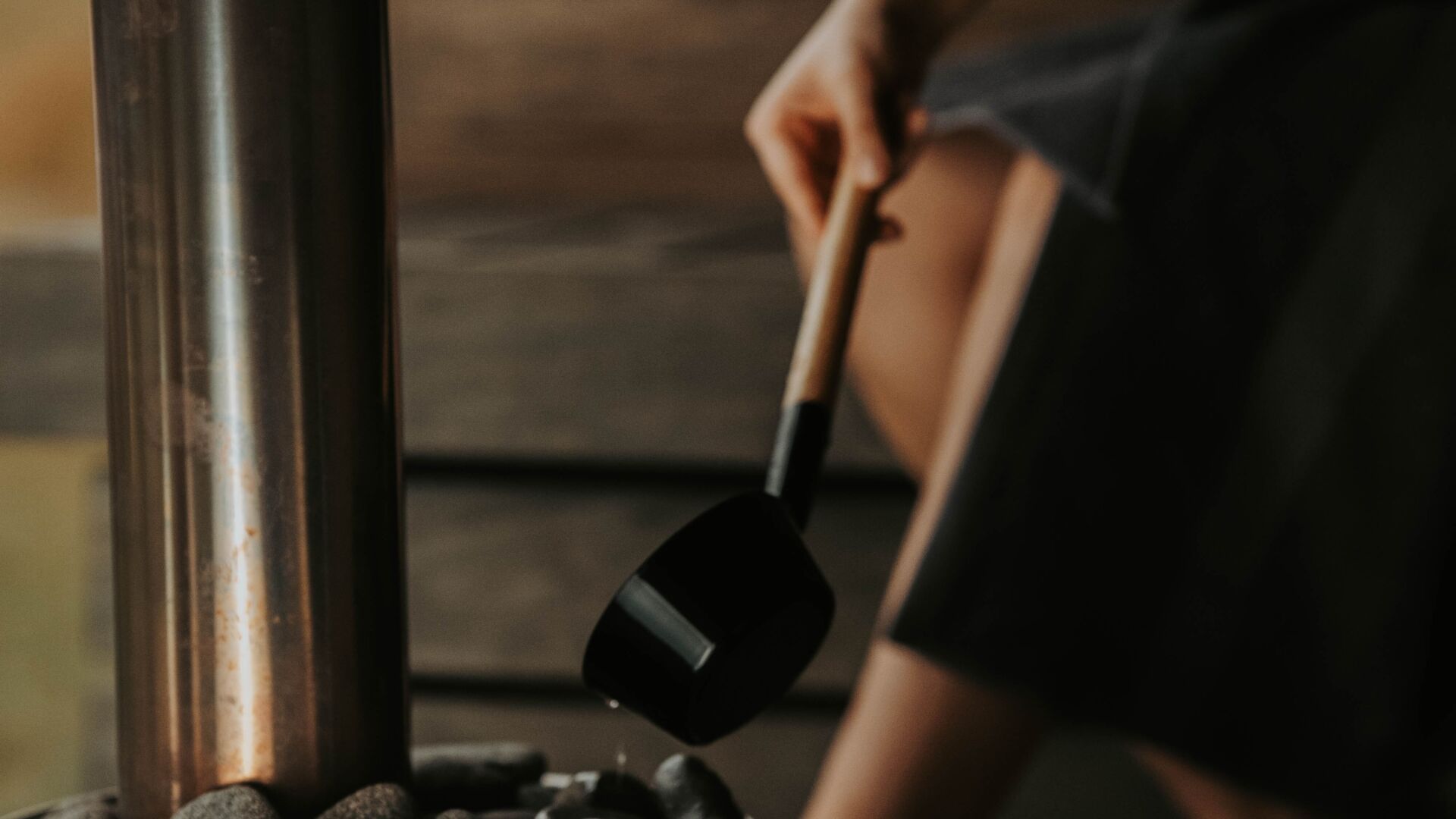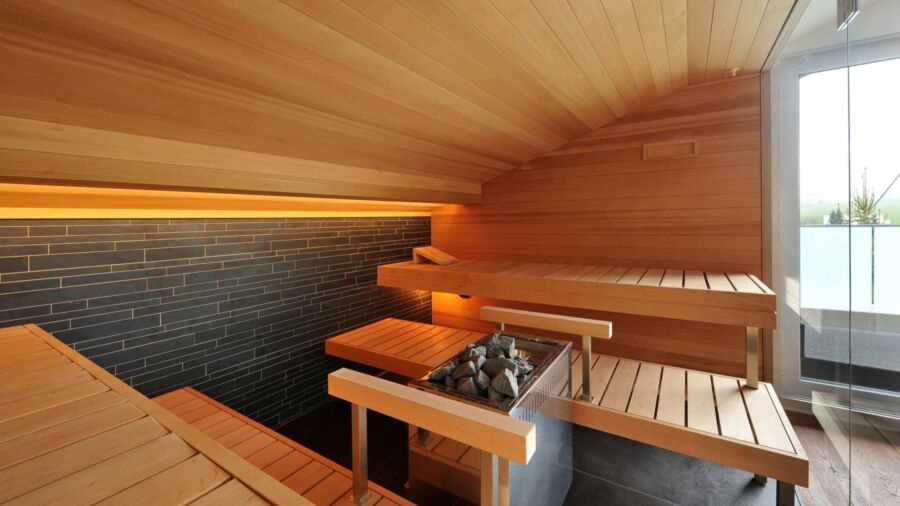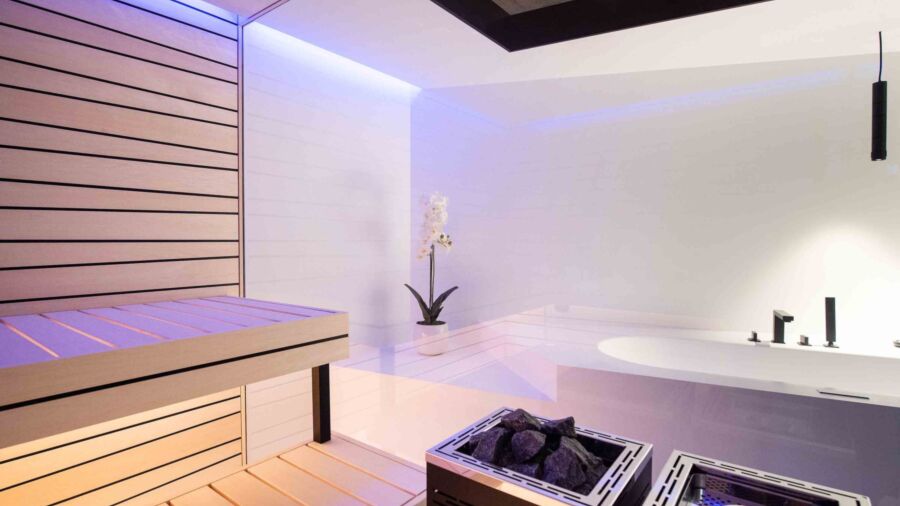Sauna for colds: Soothing support for your recovery
The question of whether to consider going to the sauna during a cold is one that concerns many people. While some argue that the heat and humidity of the sauna can relieve the symptoms of a cold, others worry that going to the sauna could make the cold worse. In this article, we wellness experts and sauna builders in Switzerland take a closer look at whether it's advisable to go to the sauna if you have a cold, what precautions you should take and whether steam saunas are a healthy way to deal with colds.

The healing effect of the sauna for colds: Strengthening the body
Taking a sauna can actually have some positive effects on your health when you have a cold. However, it is important to note that if you have a cold, you should not sauna with other people to avoid infection. Therefore, a sauna for your home is a particularly good idea. A sauna helps promote blood flow through the heat, which in turn can help immune cells reach the affected areas of the body more quickly. This can strengthen the body's immune response and thus support the fight against the common cold. In addition, when you have a cold, sweating in the sauna can help to eliminate toxins from the body and open blocked airways, which can lead to temporary relief of symptoms. Here are some positive effects of sauna bathing, especially in relation to colds:
- Improved blood circulation: The heat in the sauna causes the blood vessels to dilate and promotes blood flow. This can help transport defence cells to the infected areas more quickly and boost the immune response.
- Strengthening the immune system: Regular sauna sessions can stimulate the production of white blood cells, which play a crucial role in the defence against pathogens. This can help to strengthen the immune system and support the fight against cold viruses.
- Airway dilatation: The heat and steam in the sauna can open blocked airways and help loosen mucus and relieve the common cold. This can provide temporary relief from a blocked nose and cough.
- Detoxification: Sweating in the sauna promotes the elimination of toxins from the body, which helps to relieve the organism. This can help the body recover more quickly from pathogens such as viruses and infections.
- Relaxation and stress reduction: Visiting the sauna can lead to deep relaxation and reduce stress. This is important because stress can weaken the immune system.
- Better sleep quality: Taking a sauna can promote muscle relaxation and thus contribute to better sleep quality. Restful sleep is crucial for recovery during a cold.

Please note that these positive effects of saunas may vary from individual to individual and are not recommended in case of severe cold symptoms or fever. Visiting the sauna during a cold can mean additional stress for the body, as the alternation between heat and cold stresses the cardiovascular system. This can even worsen the state of health in the acute stage of an influenza infection. If in doubt, consult your doctor before visiting the sauna.

Cold and sauna - When is it useful?
The question of whether one should go to the sauna when cold concerns many people. Going to the sauna when you have a cough or cold, provided there are no fever or severe symptoms, can be a supportive measure. Our recommendations offer helpful guidelines to help you decide whether and how to use the sauna when you have a respiratory condition:
- Body well-being: Before using the sauna when you have a cold, listen to your body's signals. If you feel particularly weakened or unwell, it may be better to refrain from using the sauna.
- Step-by-step acclimatisation: To gently acclimatise your body to the moist heat of the steam sauna, it is recommended to start with short sessions of about 10-15 minutes. This gradual acclimatisation gives your body the opportunity to adapt to the changed environment.
- Sufficient hydration: Even in the steam sauna, sweating takes place, resulting in fluid loss. To counteract this effect, it is important to drink enough water during and after the steam sauna. This helps to maintain hydration and prevent potential dehydration.
- Conscious breathing for the respiratory tract: Use the time in the steam sauna to cleanse your respiratory tract in a healthy way. Breathe deeply in and out consciously and gently. The moist air can help open blocked nasal passages and loosen mucus. This conscious breathing not only supports your respiratory system, but also helps you relax.
- Note to your own body:Every person reacts individually to the heat and humidity of the steam sauna. Pay attention to how your body feels during the session. If you feel discomfort, dizziness or other unpleasant symptoms, end the session immediately.
Detoxification and cleansing in the sauna for colds
During a sauna for a cold, the body experiences intense sweating, which opens the pores. This creates an excellent opportunity for a comprehensive detoxification and cleansing of the organism. Especially during the summer months, this effect is intensified, as the body already begins detoxification by sweating at elevated temperatures. So take advantage of the cosy heat of the sauna to give your body an extra boost in cleansing.
Steam sauna for colds - A milder alternative?
For people who have concerns about the dry heat in conventional saunas, the steam sauna is an effective alternative for colds. The steam sauna produces humid air that can help clear the respiratory tract and loosen mucus. This humid environment can be perceived as a gentler option, without excluding those who appreciate the traditional sauna.
The advantages of the steam sauna for colds
- Gentle humidification: The steam sauna creates a humid environment that does not dry out the mucous membranes as much as the dry heat of a traditional sauna. This can be particularly beneficial as dry mucous membranes can often exacerbate the symptoms of a cold.
- Respiratory relief: The moist air in the steam sauna can help open up blocked airways. This can make breathing easier and help loosen the mucus that blocks the airways.
- Gentle heat: The temperatures in the steam sauna are usually lower than in conventional saunas. This means that your body is exposed to less stressful conditions, which is especially important if you are already weakened by a cold.










